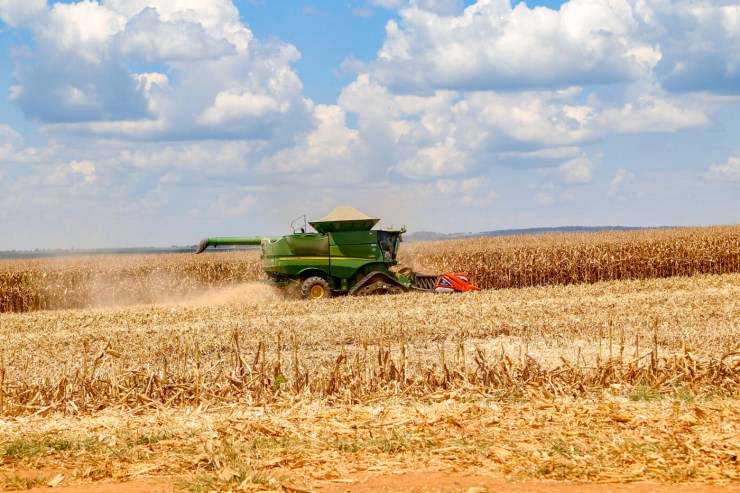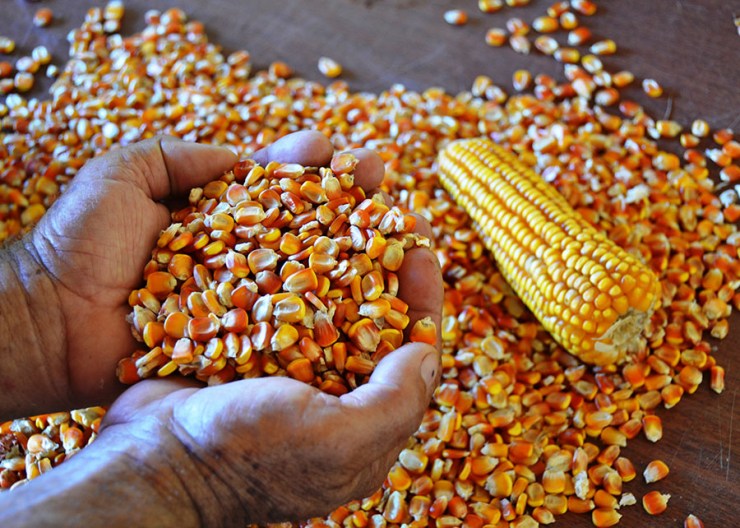Nitrogen, along with potassium and phosphorus, forms the trio of primary macronutrients involved in plant development known as NPK. Among these three essential elements, however, nitrogen is usually the most expensive and requires the greatest investment from farmers. It is also the most required by plants, being essential for their growth, root development, and directly contributing to photosynthesis.

Photo: Disclosure/OPR Archive
While nitrogen fertilization is essential for most agricultural production, it does come at a cost. Given that its efficiency rarely exceeds 50% due to losses during leaching, volatilization, and denitrification, using the fertilizer for prolonged periods or in excessive doses can lead to serious environmental impacts.
The application of nitrogen fertilizers is often associated with the release of nitrous oxide, a gas with an atmospheric warming potential 265 times greater than that of carbon dioxide and which can remain in the atmosphere for more than a hundred years, in addition to contributing to the destruction of the ozone layer.
In the soil, excess nitrogen can be leached into water bodies, with the risk of causing eutrophication of rivers and lakes, leading to the excessive growth of algae and aquatic plants, unbalancing the ecosystem and causing fish deaths, for example.
Bacteria reduced fertilizer use in soybean production
In this context, Brazil stands out globally as a successful example of minimizing the large-scale application of nitrogen fertilizers in legume crops, such as soybeans, reducing costs for producers and environmental impact. This characteristic of Brazilian agriculture dates back to the 1960s, when researchers began achieving excellent results in studies evaluating the replacement of these conventional fertilizers with microorganisms capable of fixing nitrogen already present in the atmosphere and making it available to plants.
Among the pioneers in this field of study are researchers Johanna Döbereiner and Mariangela Hungria, who in May 2025 was awarded the World Food Prize, considered by many agricultural scientists as the “Nobel Prize of Agriculture”.
Brazil's success in using bacteria of the genus Bradyrhizobium to fix nitrogen in soybean crops was highlighted by the journal Frontiers in Microbiology as one of 14 examples worldwide of successful use of microorganisms to increase agricultural production. The publication celebrates, for example, the use of nitrogen-fixing bacteria in 80% of the soybean area planted in the 2019/2020 harvest, a management technique that successfully prevented the release of 430 million tons of CO2 into the atmosphere during that period. "Imagine you're growing a crop as important to Brazil and the world as soybeans, and instead of applying 400 or 500 kilograms of nitrogen fertilizer per hectare, you apply a bacterium capable of extracting nitrogen from the atmosphere and delivering it to the plant in exchange for food and protection. This has been happening in Brazil for many years; it's nothing new," explains Fernando Shintate Galindo, an agronomist, specialist in Sustainable Nutrient Management, and professor in the Department of Plant Production at the School of Agricultural and Technological Sciences (FCAT) at Unesp, Dracena campus.

Photo: Disclosure/Freepik
According to him, in the last 15 years there has been a great evolution in methodologies and techniques, which has allowed researchers to understand that there is an infinity of microorganisms capable of benefiting various crops besides soybeans.
Galindo has been exploring different types of microorganisms that promote plant growth, reducing fertilizer use while maintaining, or even increasing, production. In one of his studies, published in the journal Plant Biology, from BioMed Central (BMC), the Sustainable Nutrient Management specialist, along with a team of researchers, sought to evaluate the benefits of inoculating corn crops with two bacteria simultaneously: Azospirillum brasilense, known for its ability to fix nitrogen in the soil and stimulate plant growth, and Bacillus subtilis, which promotes root growth and can contribute to pest and disease resistance.
The work lasted approximately two years and was part of a postdoctoral internship supported by FAPESP. The field trial, conducted in three different locations, involved four corn planting configurations: a control group, a group that received only Azospirillum brasilense, one that received only Bacillus subtilis, and finally, a fourth group that received both microorganisms. Furthermore, different nitrogen fertilizer application rates were tested in each group.
More productivity at a lower cost
From then on, the researchers monitored each stage of the plots' growth to compare the plants' physiological and biochemical responses under each scenario, including parameters related to photosynthesis, oxidative stress, and nutrient use, such as their ability to recover nitrogen from the soil and increase its use efficiency.
Among the main results found by the team is the confirmation that the consortium of bacteria, despite having some distinct characteristics, together with an ideal dose of nitrogen, was able to improve the efficiency in the use of the macronutrient, as well as being able to promote the aerial and root growth of the plants.
The combined inoculation of Azospirillum brasilense and Bacillus subtilis also had an effect on parameters related to photosynthesis, increasing CO2 uptake and assimilation, transpiration, and water use efficiency, while reducing oxidative stress. "In this study, we observed that inoculation complements nitrogen fertilization with excellent results, but does not replace it. And when too much nitrogen is applied in conjunction with these microorganisms, their performance is impaired, like a kind of overdose," Galindo explains, adding: "It's a balance in which there's an ideal range for the plant's response to nutrients and bacterial co-inoculation."

One of the experimental areas located in the municipality of Selvíria, in Mato Grosso do Sul – Photo: Fernando Galindo
The results indicated that the optimal nitrogen application rate could be reduced from the conventional 240 kg N/ha to 175 kg N/ha, reducing costs while increasing corn yield by 5.2%. Furthermore, the formula would reduce carbon dioxide emissions by 682.5 kg CO2e/ha.
According to the researcher, a reduction of approximately 25% in nitrogen fertilization in corn crops would save producers approximately R$ 130 per hectare. "If we extrapolate these values to a hypothetical model considering the entire area cultivated with corn in Brazil, which currently stands at around 22 million hectares, we're talking about savings of approximately R$ 2.86 billion annually," the professor projects, adding: "This is what's visible, what we can measure. There are also environmental and climate issues that we can't yet measure so well, but which need to be taken into consideration."




